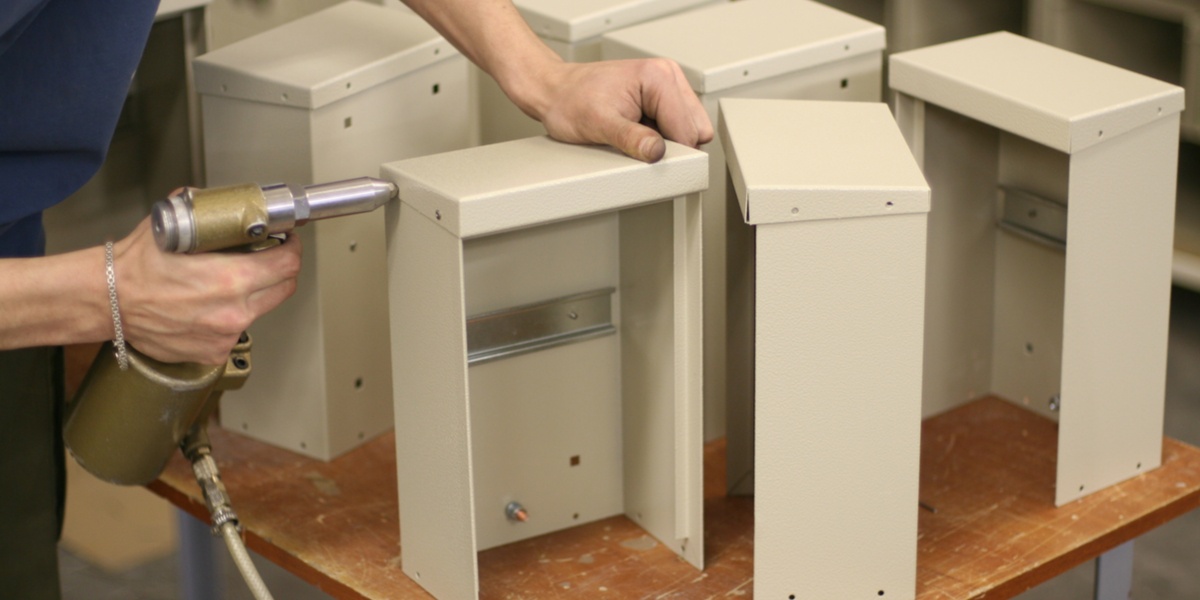NEMA and IP Enclosures: Know the Difference

Electrical equipment performs various important functions in modern built environments. The enclosures housing this equipment must provide adequate protection, considering site conditions. Enclosures built according to standards from the National Electrical Manufacturers Association have a NEMA rating, while those built according to IEC standards have an IP rating (International Protection).
Since increased protection comes with a higher cost, over-engineered enclosures are not recommended. For example, there is no reason to use watertight and corrosion-proof enclosures in commercial offices, but they become necessary in marine environments.
This article describes the main types of enclosures, under both the NEMA and IP rating systems. Note this is an informative guide, not intended to be used in place of NEMA and IEC standards in actual applications.
Are you using the right electrical enclosure types?
Overview of NEMA Enclosures
NEMA enclosure types are specified using numbers, alone or combined with letters. Each type has different protection features, and a larger number does not always mean more protection. NEMA enclosures go from types 1 to 13, where types 7 to 10 indicate enclosures suitable for hazardous locations (designed to prevent ignition of flammable solids, liquids and vapors).
NEMA Enclosures for Non-Hazardous Locations
|
NEMA RATING |
DESCRIPTION |
|
Type 1 |
Designed for indoor use only. |
|
Type 2 |
Designed for indoor use only |
|
Type 3 |
Designed for indoor and outdoor use. |
|
Type 3R |
Similar to Type 3, but solid protection is only against falling dirt. |
|
Type 3S |
Same as Type 3, with an added feature: the opening mechanism is operable when covered with ice. |
|
Types 3X, 3RX and 3SX |
Same protection as types 3, 3R and 3S, plus corrosion resistance. |
|
Type 4 |
Designed for indoor and outdoor use. |
|
Type 4X |
Same protection as Type 4, plus corrosion resistance. |
|
Type 5 |
Designed for indoor use only. |
|
Type 6 |
Designed for indoor and outdoor use. |
|
Type 6P |
Same protection as Type 6, plus corrosion resistance and prolonged immersion (still at low depth). |
|
Type 11 |
Designed for indoor use only. |
|
Type 12 |
Designed for indoor use only. |
|
Type 12K |
Same protection as Type 12K, but includes knock-out holes. |
|
Type 13 |
Designed for indoor use only. |
NEMA Enclosures for Hazardous Locations
Enclosures for hazardous locations are designed to prevent explosions. This is accomplished by isolating ignition sources from flammable substances, or by designing enclosures to withstand an internal explosion without breaking open.
|
NEMA RATING |
DESCRIPTION |
|
Type 7 |
Designed for indoor use only. |
|
Type 8 |
Designed for indoor and outdoor use. |
|
Type 9 |
Designed for indoor use only. |
|
Type 10 |
Built to the requirements of the Mine Safety and Health Administration. |
Overview of IP Enclosures
IP enclosures also indicate their protection rating with numbers, but the logic is simpler than in NEMA enclosures:
- The first digit indicates solid protection, while the second indicates liquid protection.
- In each of the digits, a higher number indicates increased protection, a principle that doesn’t always apply with NEMA enclosures.
The first digit goes from 0 to 6, while the second goes from 0 to 8 (plus a special rating indicated as 9k). This means IP00 is the lowest protection rating, while IP69k is the highest. IP ratings are summarized in the tables below.
Solid Protection
|
1ST DIGIT |
DESCRIPTION |
|
0 |
No protection. |
|
1 |
Particles larger than 50 mm. |
|
2 |
Particles larger than 12.5 mm. |
|
3 |
Particles larger than 2.5 mm. |
|
4 |
Particles larger than 1.0 mm. |
|
5 |
Limited dust ingress. |
|
6 |
Completely dust-tight. |
Liquid Protection
|
2ND DIGIT |
DESCRIPTION |
|
0 |
No protection. |
|
1 |
Vertical water drip. |
|
2 |
Vertical water drip, enclosure tilted 15°. |
|
3 |
Water spray up to 60° from the vertical axis. |
|
4 |
Water spray from any direction. |
|
5 |
Water jet from 6.3 mm nozzle. |
|
6 |
Powerful water jet from 12.5 mm nozzle. |
|
7 |
Temporary immersion up to 1 m. |
|
8 |
Extended immersion deeper than 1m. |
|
9k |
Close-range, high-temperature, high-pressure water jets. |
Conclusion
Enclosure selection is a very important aspect of electrical design. If the enclosure does not provide adequate protection for the application at hand, electrical components are likely to fail shortly. On the other hand, over-specified enclosures represent wasted capital, which could be dedicated to other project features or to energy efficiency measures.
When dealing with the NEMA and IP rating systems, consider that neither is better than the other; they simply differ in the standards followed and how protection is specified. However, consider that NEMA standards are dominant in North America.

Michael Tobias
Michael Tobias, the Founding Principal of NY Engineers, currently leads a team of 50+ MEP/FP engineers and has led over 1,000 projects in the US
Join 15,000+ Fellow Architects and Contractors
Get expert engineering tips straight to your inbox. Subscribe to the NY Engineers Blog below.



